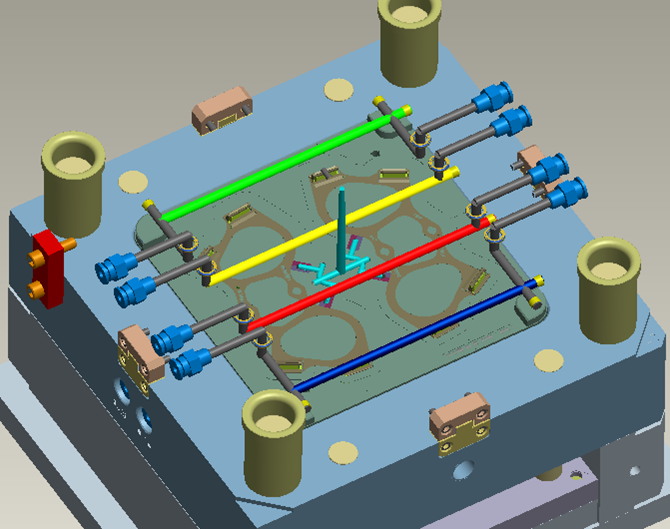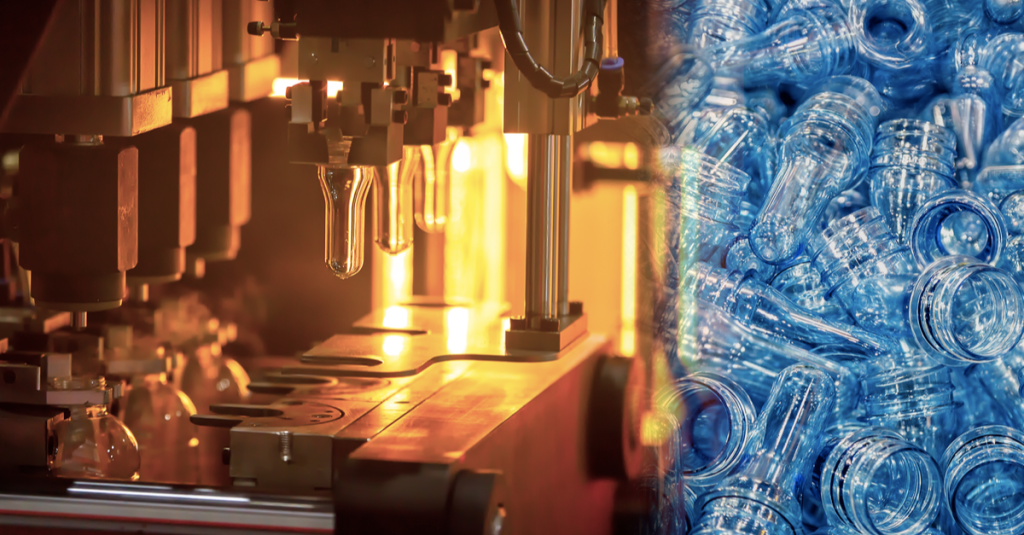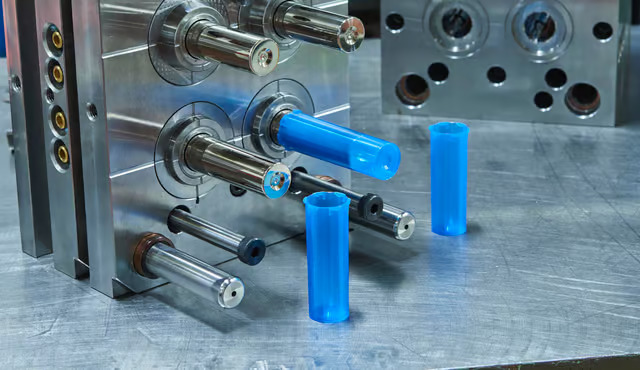
Cooling systems are critical components of the injection molding process, significantly impacting production efficiency, part quality, and overall cost. In injection molding, molten plastic is injected into a mold, where it solidifies into the desired shape. The cooling phase, which accounts for up to 70% of the cycle time, ensures the material solidifies uniformly while maintaining dimensional accuracy and surface finish. Effective cooling systems help optimize this process, balancing speed and quality.
Importance of Cooling Systems in Injection Molding
Cycle Time Reduction
- Cooling is the longest stage in the injection molding cycle. Efficient cooling reduces cycle times, increasing productivity and cost-effectiveness.
Part Quality
- Proper cooling ensures uniform material solidification, minimizing defects such as warping, sink marks, and residual stress.
Dimensional Accuracy
- Consistent cooling across the mold cavity maintains tight tolerances, ensuring the part meets specifications.
Surface Finish
- Cooling affects the surface appearance of molded parts, preventing imperfections like blemishes or flow marks.
Material Properties
- Controlled cooling maintains the mechanical properties of plastics, such as strength and durability.
Types of Cooling Systems
Conventional Cooling Channels
- Straight channels are drilled into the mold to circulate a cooling medium, typically water or oil.
- Simple and cost-effective but less efficient for complex mold geometries.
Conformal Cooling Channels
- These channels follow the contour of the mold cavity, ensuring even cooling for intricate designs.
- Often created using advanced techniques like 3D printing or laser sintering, resulting in faster cooling and better part quality.
Baffle and Bubbler Systems
- Used in areas where conventional channels cannot reach.
- Baffles split the cooling flow, while bubblers create a flow in narrow or deep sections.
Thermal Pins and Heat Pipes
- Thermal pins transfer heat away from hotspots in the mold, improving cooling efficiency in challenging areas.
Advanced Cooling Technologies
- Injection Molding with CO₂ or Nitrogen: Utilizes gases to achieve faster and more uniform cooling.
- Active Mold Temperature Control: Uses smart systems to adjust cooling dynamically during the molding cycle.
Key Components of a Cooling System
Cooling Medium
- Water is the most commonly used medium due to its high thermal conductivity and cost-effectiveness.
- Oil is used for high-temperature applications.
Flow Rate and Pressure
- The flow rate and pressure of the cooling medium determine the efficiency of heat transfer. Proper design ensures optimal flow across the mold.
Temperature Control Unit (TCU)
- Regulates the temperature of the cooling medium to maintain consistent cooling throughout the cycle.
Manifolds and Connectors
- Distribute the cooling medium to various sections of the mold. Proper sealing and maintenance prevent leaks.
Challenges in Cooling System Design
Complex Mold Geometries
- Ensuring uniform cooling in intricate designs can be challenging.
- Solution: Use conformal cooling or advanced simulations during the design phase.
Cycle Time vs. Quality
- Faster cooling reduces cycle time but may lead to uneven solidification and defects.
- Solution: Optimize cooling channel placement and balance flow rates.
Energy Efficiency
- Cooling systems consume significant energy, especially in large-scale production.
- Solution: Use energy-efficient chillers and temperature control systems.
Benefits of Optimized Cooling Systems
Enhanced Productivity
- Reduced cycle times allow for higher production volumes.
Improved Part Quality
- Uniform cooling eliminates defects, resulting in parts that meet or exceed quality standards.
Cost Savings
- Shorter cycle times and fewer defective parts reduce material and operational costs.
Longer Mold Life
- Proper cooling prevents thermal stress and extends the lifespan of molds.
Cooling System Design Process
Simulation and Analysis
- Mold flow analysis tools simulate cooling behavior, predicting potential hotspots and optimizing channel placement.
Prototype Testing
- Prototypes are tested to validate cooling efficiency and make necessary adjustments before full-scale production.
Integration
- Cooling systems are integrated into the mold during the manufacturing process, ensuring compatibility with other mold components.
Maintenance and Monitoring
- Regular maintenance of cooling channels and equipment ensures consistent performance and prevents downtime.
Future Trends in Cooling Systems
Additive Manufacturing for Mold Inserts
- 3D printing enables the creation of conformal cooling channels, reducing cycle times and enhancing part quality.
Smart Cooling Systems
- Real-time monitoring and AI-based control systems adjust cooling parameters dynamically for optimal performance.
Sustainable Cooling
- Use of closed-loop systems and eco-friendly cooling media to reduce water and energy consumption.

